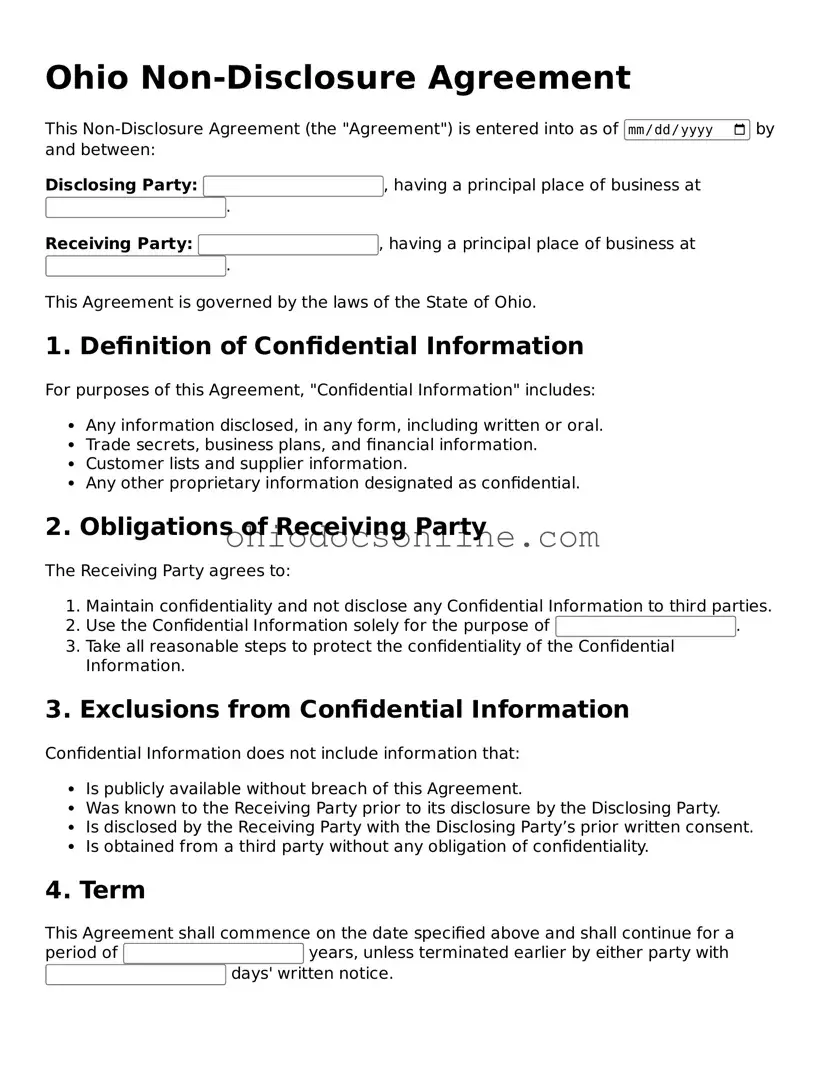Printable Non-disclosure Agreement Template for Ohio
The Ohio Non-disclosure Agreement form is a legal document designed to protect confidential information shared between parties. It establishes clear guidelines on how sensitive information must be handled and prevents unauthorized disclosure. This agreement is essential for businesses and individuals seeking to safeguard their proprietary data.
Open Editor
